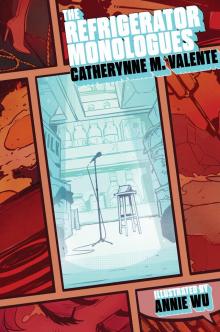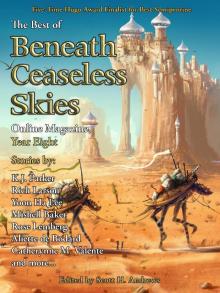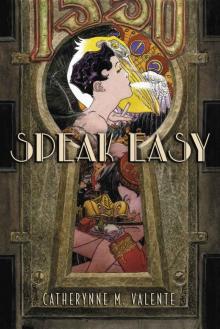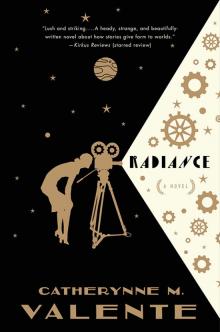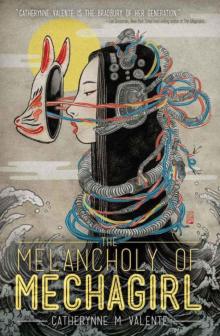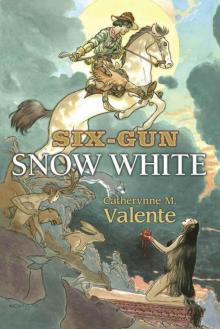


Hellstrom's Hive
Frank Herbert

HELLSTROM'S HIVE
Frank Herbert
Science Fiction Masterworks Volume 91
eGod
Contents
Cover
Title
Introduction by Adam Roberts
Hellstrom’s Hive
About the Author
Also by Frank Herbert
INTRODUCTION
by Adam Roberts
In 1971 a feature-length movie called The Hellstrom Chronicle won the Oscar for Best Documentary (released in the UK the following year, it picked up the 1972 BAFTA for the same category). Directed by Walon Green and written by David Seltzer, it cast actor Lawrence Pressman in the role of Dr Nils Hellstrom, a fictional Swedish Professor. Over the course of the film Hellstrom presents a variety of fascinating documentary footage of insects, spicing its natural history with a quasi-apocalyptic commentary. His thesis is that insects have inhabited this world a lot longer than humanity, are better adapted to it, and will prevail where we will not. I recommend you check it out: the whole film, in sections, is on YouTube.
Hive, is a fictional elaboration of the premise of that movie. As such it is a fairly unusual piece of writing. We’re familiar, of course, with ‘novelisations’ of motion pictures, commonplace and usually low-quality cash-in exercises. On occasion writers pen sequels or prequels to successful films, sometimes to more interesting effect. But Hellstrom’s Hive is something different: an original novel of considerable power that takes the premise (and, of course, name) from a film in order to go in a radically new creative direction. The book is not a tie-in; it’s a kind of tie-out: a deliberate metamorphosis of one text into something much richer and stranger. In place of the effective but rather simple-minded documentary narrative of the film, Herbert creates a compelling apocalyptic thriller. Where The Hellstrom Chronicle is interested in insects, Herbert shifts the focus to people.
Herbert’s name is most closely associated with Dune (1965), his hugely influential planetary romance. It and its myriad sequels (not all of them written by Herbert, not many of them very good) established the desert-planet of Arrakis as one of the most celebrated locations in twentieth-century science fiction. Indeed, so overwhelmed has Herbert’s writing career been by this, his single most successful creation, that it is easy to forget that he wrote other books. He did, of course; a great many, including a number of titles at least as memorable and brilliant as Dune. More to the point, and despite its enormous success, Dune isn’t even particularly characteristic of its author.
Dune’s wide-open, barren spaces work as both topographic realisation and also as metaphor: specific enough (it has to do in some sense with ‘Arabia’ and Islam, with climate change and also mysticism) not to be vague, but empty enough to provide an imaginative space that readers can fill with their own phantasmic creativity. It seems to me that the international success of the Dune books has something to do with a kind of imaginative spaciousness, a open-ended aesthetic particularly hospitable to fan engagement. But this is not what we find if we turn to the rest of Herbert’s work. On the contrary, his predominant aesthetic is one of claustrophobia. His first novel was the futuristic submarine thriller The Dragon in the Sea (1956), that creates genuine tension by increasing the pressure on its confined, increasingly paranoid crew. The Dosadi Experiment (1977) concerns a city in which 850 million individuals are confined within 40 square kilometres. And Herbert returned several times to notions of human life modelled on the close-packed hive-existence of insects: in The Green Brain (1966) and then again in Hellstrom’s Hive (1973). Of all these fictional representations of claustrophobia, Hellstrom’s Hive is the best. Herbert understands that the metaphorical diamond inside our skulls is created by pressure; that claustrophobia and closeness create unparalleled narrative focus. Where Dune opens itself into myriad new possibilities – think how often that novel has been adapted into other media, cinema, TV, music, video game, fan art and so on – Hellstrom’s Hive works in the opposite direction, taking a cinematic text and closing it, brilliantly, down into prose narrative.
Science fiction has long been fascinated with the ‘hive mind’. This has, I suppose, something to do with the uncanny balance in insect existence between estranging alienness and weird familiarity. On the one hand, ant-nests, beehives and termite mounds are utterly unlike human mammalian interaction, such that ‘insectoid’ has become such a ubiquitous way of representing alien life that it has become almost a cliché. At the same time, though, human social structures are so complex and interlocking that, in nature, only the insect hive provides any kind of analogue; and the division of labour, the collectivised existence and the singleness of purpose are as compelling (in their efficiency and unity) as they are repellent. H.G. Wells’ 1905 short story ‘The Empire of the Ants’ posited the dangerous potential of the hive-mind; and in his earlier novel The First Men in the Moon (1901) the lunar aliens live according to the logic of a great hive. Hundreds of stories, novels and films followed, either casting hive-insects as global threats – as in Frank Ridley’s The Green Machine (1926), Gordon Douglas’ giant ants film Them! (1954) or Keith Roberts’ The Furies (1966) – or else conceived of aliens as menacing insectoid threats. Amongst the many examples of this latter strategy are Robert Heinlein’s Starship Troopers (1959), Orson Scott Card’s Enders’ Game (1985) and its many sequels, or the ‘Borg’ in Star Trek: the Next Generation. In all these cases, what is acknowledged is the strength (understood as threat) of the hive organisation when seen from the outside. When viewed, as it were, from the inside that strength becomes the correlative to social oppression, often during the Cold War equated directly with Western perceptions of Communist threat.
Herbert’s novel, though written when the anti-Red paranoia was high in his home country, has aged better, because he takes a longer, evolutionary perspective. In this – like the recent novel Coalescent (2003) by Stephen Baxter – the hive itself is much more carefully balanced, simultaneously appealing and appalling. We can read the logic of its swarm as that of stifling claustrophobia or of protective intimacy and safety, something Herbert’s treatment, with its various comely nude women and talk of mating, isn’t above treating in terms of sexual titillation. In other words, we can take the hive as a trope for the alien nation or as a trope for the family. And one of the things that lifts Herbert’s hive above the run-of-the-mill is its openness to the idea that hive-life entails not hideously regimented monotony but – precisely – metamorphosis. As Hellstrom himself says, echoing the motion picture that (once again) Herbert has metamorphosed into this novel, ‘unlike man, whose physical limitations are dictated from the moment of his birth, the insect is born with the ability to actually improve upon his body. When the insect reaches the limits of his capability, he miraculously transforms into an entirely new being. In this metamorphosis, I find the most basic pattern for my understanding of the Hive. To me, the Hive is a cocoon from which the new human will emerge.’ The metamorphosis from film to book formally enacts this larger ambition. Things, says this novel, are going to change.
Adam Roberts
Words of the brood mother, Trova Hellstrom.
I welcome the day when I will go into the vats and become one with all of our people.
(Dated October 26, 1896.)
THE MAN with the binoculars squirmed forward on his stomach through the sun-warmed brown grass. There were insects in the grass and he did not like insects, but he ignored them and concentrated on reaching the oak shadows at the hillcrest with minimum disturbance of the growth that concealed him even while it dropped stickers and crawling things on his exposed skin.
His narrow face, swarthy and deeply seamed, betrayed his age – fifty-one years – but the hair, black and oily, that poked from beneath his kh
aki sun hat belied these years. So did his movements, quick and confident.
At the hillcrest, he drew several deep breaths while dusting the binocular lenses with a clean linen handkerchief. He parted the dry grass then, focused the binoculars, and stared through them at the farm that filled the valley below the hill. The haze of the hot autumn afternoon complicated his examination as did the binoculars, a pair of ten-sixties of special manufacture. He had trained himself to use them the way he fired a rifle: hold breath, concentrate on rapid scanning with only eye movements, keeping immobile the expensive instrument of glass and metal that brought distances into such immediate detail.
It was an oddly isolated farm that met his amplified gaze. The valley was about half a mile long, perhaps five hundred yards wide for most of its length, narrowing at the upper end where a thin trickle of water spilled down a black rock face. The farm buildings occupied cleared ground on the far side of a narrow stream whose meandering, willow-bordered bed was only a thin reminder of its spring affluence. Patches of wavering green moss marked the stream’s rocks, and there were a few shallow pools where water appeared not to flow at all.
The buildings sat back from the stream – a cluster of weathered boards and blind glass at rustic variance with the neatness of harvested plantings that ran in parallel rows within cleanly squared fencelines over the rest of the valley. There was the house, its basic unit in the old saltbox pattern, but with two added wings and a bay window on the wing that pointed toward the creek. To the right of the house there was a large barn with big doors on the second level and an upjutting cupola arrangement along its ridgeline: no windows there, but louvered ventilators were spaced along its entire length and at the visible end. Up on the hill behind the barn there stretched a decaying feed shed; a smaller building on this end that could be an old outhouse; another small wooden structure higher on the hill behind the farmhouse, possibly an old pumphouse; and, down by the higher main fence at the valley’s northern end, a squat concrete block about twenty feet on a side and with flat roof: new pumphouse was the guess, but it looked like a defensive blockhouse.
The watcher, whose name was Carlos Depeaux, made a mental note that the valley fitted the descriptions. It was full of default messages: no people stirring about on the land (although a distinctly audible and irritating machinery hum issued from the barn), no road coming up from the north gate to the farm buildings (the nearest road, a one-way track, came up to the valley from the north but ended at the gate beyond the blockhouse). A footpath with narrow indentations apparently from a wheelbarrow stretched from the gate to the farmhouse and barn.
The valley’s sides were steep farther up and in places almost craggy with brown rock outcroppings at the top on the far side. There was a similar rocky upthrust about a hundred feet to Depeaux’s right. A few animal tracks wound their dusty ribbons through oak and madrona along the valley sides. The black rock of the tiny waterfall closed off the southern end where a thin cinnamon tracery of water spilled into the stream. To the north, the land undulated away out of the valley, widening into pasture meadows and occasional clumps of pine intermingled with oak and madrona. Cattle grazed in the far distance to the north and, although there were no fences immediately outside the farm’s barrier, tall grass revealed that the cattle did not venture too near this valley. That, too, accorded with the reports.
Having satisfied himself that the valley still matched its descriptions, Depeaux wriggled backward behind the crest, found a shaded patch beneath an oak. There, he turned onto his back and brought his small knapsack into a position where he could explore its interior. He knew his clothing would blend well with the grass, but he still hesitated to sit up, preferring to wait and listen. The sack contained his binocular case, a well-thumbed copy of Naming the Birds at a Glance, a good thirty-five-millimeter camera with a long lens, two thin beef sandwiches wrapped in plastic, an orange, and a plastic bottle of warm water.
He brought out a sandwich, lay for a moment staring up through the oak’s branches, his pale gray eyes not really focused on anything in particular. Once, he pulled at the black hairs protruding from his nostrils. This was an extremely odd situation. Here it was mid-October and the Agency still had not been able to observe the farmers in that valley through an entire harvest. The crops had been harvested, however. That was obvious at a glance. Depeaux was not a farmer, but he thought he recognized the stubby remains of corn plantings, although the stalks had been removed.
He wondered why they had cleared away the stalks. Other farms he had seen in the long drive to this valley were still littered with harvest remains. He wasn’t sure, but he thought this was another default message in the valley that interested his Agency so much. The uncertainty, the gap in his knowledge, bothered him, however, and he made a note to check on this. Did they burn the stalks?
Presently, sensing no watchers around him, Depeaux sat up with his back against the oak’s bole, ate the sandwich, and drank some of the warm water. It was the first food he had allowed himself since before daylight. He decided to save the orange and other sandwich for later. It had been a long, slow approach to this vantage point from the place far back in the pines where he had concealed his bicycle. The van and the stake-out where he had left Tymiena were another half hour’s bicycle ride beyond that. He had decided not to venture back before nightfall and knew he was going to be very hungry before he got back to the van. Not the first time on such a job. The peculiar nature of this case had become increasingly obvious the nearer he came to the farm. Well – he’d been warned about that. Stubborn persistence had kept him pressing forward past the imaginary hunger line he knew he’d have to pass on the return. The countryside was much more open and empty of concealment than he’d expected from the aerial photos, although Porter’s reports had made specific mention of this. Depeaux had expected to approach from a different direction, however, and find his own cover. But there had been, finally, only the tall brown grass to conceal his stalking climb across a wide pastureland and up to the hill.
The sandwich finished and half his water gone, Depeaux sealed the bottle, restored it and the rest of the food to his pack. For a moment, he peered along his back trail to see if anyone had followed. There was no sign, but he couldn’t put down an uneasy feeling that he was watched. The lowering sun was picking up his trail with a shadow line, too. No helping that; the crushed grass represented a track, and it could be traced.
He had driven through the town of Fosterville at 3:00 A.M., curious about the sleeping community where, so he was told, they generally refused to answer questions about the farm. There had been a new motel on the outskirts and Tymiena had suggested they spend a night there before reconnoitering the farm, but Depeaux was playing a hunch on this case. What if there were watchers in the town to report strangers to the farm?
The Farm.
It had been capitalized in all of the Agency’s reports for some time, from quite a while before Porter had turned up missing. Depeaux had driven on to a turnoff several miles below the valley and had left Tymiena there shortly before dawn. Now, he was a bird watcher, but there were no birds visible.
Depeaux returned to the gap in the grass and had another look into the valley. There had been a massacre of Indians here in the late 1860’s – farmers killing off the remnants of a “wild” tribe to remove a threat to grazing stock. As a marker of that all but forgotten day, the valley had been named “Guarded.” According to a historical footnote Depeaux had located, the original name of the valley was Running Water, after the Indian name. Generations of white farming, however, had depleted the water table and now the water did not run year round.
As he studied the valley, Depeaux thought about the record of human nature carried in such names. A casual observer passing this way without doing his homework might think the valley had achieved its name because of its setting. Guarded Valley was a closed-in place with apparently only one real avenue of easy access. The hillsides were steep, a cliff marked the upper end, and
only to the north did the valley open out. Appearances could be deceptive, though, Depeaux reminded himself. He had reached his vantage point successfully; his binoculars might just as well be a violent weapon. In a sense, they were: a subtle weapon aimed at the destruction of Guarded Valley.
For Depeaux, that pattern of destruction had begun when Joseph Merrivale, the Agency’s operations director, had called him in for an assignment conference. Merrivale, a native of Chicago who affected a heavy English accent, had begun by grinning at Carlos and saying, “You may have to waste a few of your fellow humans on this one.”
They all knew, of course, how much Depeaux hated personal violence.
From Hellstrom’s Hive Manual.
The significant evolutionary achievement of the insects, more than a hundred million years ago, was the reproductive neuter. This fixed the colony as the unit of natural selection and removed all previous limits on the amount of specialization (expressed as caste differences) that a colony could tolerate. It is clear that if we vertebrates can take the same route, our individual members with their vastly larger brains will become incomparably superior specialists. No other species will be able to stand against us, ever – not even the old human species from which we will evolve our new humans.
The short man with the deceptively youthful face listened attentively as Merrivale briefed Depeaux. It was early on a Monday morning, not yet nine o’clock, and the short man, Edward Janvert, had been surprised that an assignment conference could be called that early on such brief notice. There was trouble somewhere in the Agency, he suspected.
Janvert, who was called Shorty by most of his associates and who managed to conceal his hatred of the name, was only four feet nine inches tall and had passed as a teen-ager on more than one Agency assignment. The furniture in Merrivale’s office was never small enough for him, however, and he was squirming on a big leather chair within a half hour.




